Text


Well looks like Re:Fantazio has the three houses fans
6 notes
·
View notes
Text
Are We Returning To 2000s Era Shonen Anime/Manga (A Discussion)
So this is going to be way more of a thinkpiece than I usually do for this blog, but recent trends in the space and niche that I devote a lot of time to, Anime/Manga, have been showing themselves that got me thinking. This is not meant to be a serious sociology case study taken as fact, it's going to be more a theory based on observations of the community that I, like many others, devote a lot of time into than a full on claim, but I do want to ask, is the anime and manga community is experiencing a resurgence in 2000s era shonen manga?
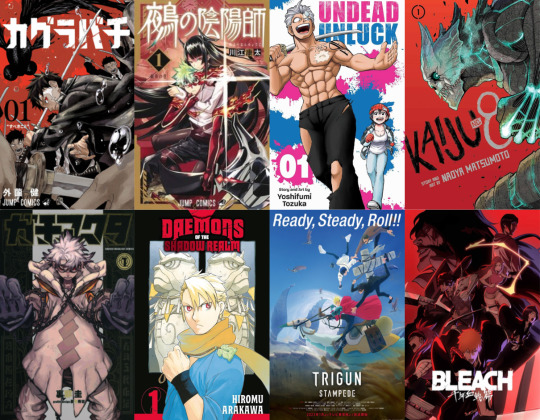
Background
Now let me get this out of the way, there is bias in these observations as I am a western anime fan, but also a North American anime fan. Meaning my gateway and gauges of pop culture are mostly determined by the history of my area of the world’s relationship with anime. From the OVAs of 80s hyper violent and hyper sexual sci fi that you had to purchase from the backs of video rental stores, to the Toonami era of 90s and early 00s programming block the centred around action anime and cartoons, the 4kids era of mass market japanese animated kids shows that were really just giant commercials with some of the earliest memetics in western sphere, and the explosion of shonen battle series in the western sphere in the mid to late 2000s marked by the rise of the colloquially named “Big 3” of shonen jump.
I understand that continents like South America or Europe may have undergone a different exposure to the Japanese medium, but as I am going in with some bias in this observation, I would like to make it clear on where the formula is coming from.
I also would like to lay down a certain clarification before making this, when discussing the topic of nostalgia I think a lot of people have forgotten what it actually means. If we go by the Cambridge dictionary definition, Nostalgia is “a feeling of pleasure and also slight sadness when you think about things that happened in the past.” This is often invoked when talking about pop culture because people from say 20 years ago don’t seem to enjoy or relate to the interests of today. The belief is that nostalgia is generational ergo if you grew up in the 80s you’re likely wishing to recapture the feelings of childhood that you associate with those trends from 20 years ago. In fact, most revaluation in media has often been catalyzed by a difference of those who grew up in an era rebuffing the opinions of those who didn’t.
There is the well known “20 Year Rule” regarding pop culture nostalgia. That every decade it longs for what was popular 20 years ago. Probably no better example than “That 70s show” being popular in the late 90s, the return of many beloved 80s franchises like “Ghostbusters” returning in the 2010s as well as series like “Stranger Things” that wrapped itself up in 80s aesthetics.
Now it goes without saying that the 20 year rule isn’t a “real” rule, rather an observation that certain trends make a return to popularity because the ones who grew up with a certain media will be the ones who add to the discourse when they come of age and will be the ones having a chance to create consumable art for the masses and that may just be revivals of once popular IP. This isn’t necessarily wrong in regards to nostalgia, but I do believe that one doesn’t need to have been born in a certain era to be nostalgic for something when we discuss pop culture. Pop culture is really just trends and preferences that become en vogue and people can acquire a taste at any given time. Sometimes it can be due to those who grew up with something now having the chance to create and drawing upon their own childhoods, sometimes it's just due to not being exposed, other times it can be a certain feeling of disillusionment of the now, and seeking something that peaks your interest, and even sometimes it can be major corporations or networks looking for things with existing audiences to draw upon that actually expand the audience. In fact one of the most prominent Netflix adaptations of the 2020s has been live Action Avatar the Last Airbender and One Piece, both shows that got their start on American televisions in 2004 and 2005.
So I want to stress this is not necessarily about how if you grew up with the original Mobile Suit Gundam show you are being replaced by the kids who were watching GetBackers. And or if you are a fan of shows that came out in the 2000s you yourself were born in the 2000s.
But what was the landscape of the English speaking anime community like back in the 2000s? Well let me paint a portrait for you.
What was the 2000s like for anime fans?
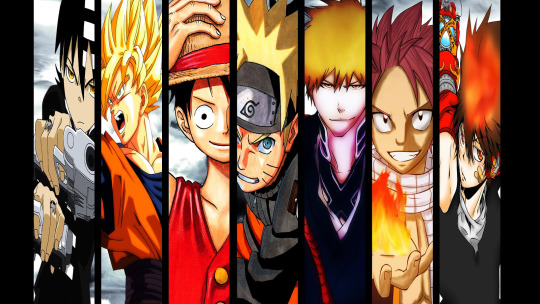
The term I used, “shonen boom period”, is somewhat mythologized in the western anime sphere. There was a glut of high profile shonen anime running around the same time that most people identified with this time period and was arguably when we saw the most influx of people getting into the hobby. One Piece, Naruto, and Bleach served as big series known for their massively large casts, MCs with a level of attitude, some of the most hype centric power supernatural/extraordinary power systems, and certain brand of “Japanese-y” humor.
We can’t deny that it wasn’t just these series however, as series like Fullmetal Alchemist became many people’s introduction to more narratively intricate series interspersed with a somewhat gothic action style. The gothic and somewhat edgy Death Note became many fans' first ever “battle series that’s not a battle series” that also incorporated many biblical and gothic horror elements into its presentation. And things like Code Geass also incorporated this combination of hyper stylized cat and mouse with ornate and gothic aesthetics and fighting robots.
Series like Ouran Highschool Host Club and and Haruhi Suzumiya were basically gateways to the more hyper extraordinary slice of life series that didn’t shy away from fanservice and loud comedy. With ecchi like Rosario + Vampire taking it to an even greater extreme. For people willing to go even deeper, series like Fairy Tail began to pop up and share a distinct similar flavor to series like One Piece and Naruto which arguably started the popular conception of it coming from the same magazine as the latter. That’s not also discounting the amount of holdovers from the 90s like Dragon Ball z, Trigun, and Yu Yu Hakusho, which also had an edge towards fantastical combat and comedic oriented series.
All of this is to generally illustrate the media diet of what an average anime fan was expected to have some level of access to. As this was far before the eras of Funimation or Hulu having online services. Not a homogenized spread by any means, and im certain plenty of readers could name more underground or smaller series like Mushishi or Elphen Lied, but generally the popular mainstream you could tell that there was a consistent theme of long form media with a very loud, very flashy, and very action oriented type of series. Which I think is fair to say had skewed some people’s perception. And while I cannot claim with utter certainty that Japan was the same in this regard, you can look at magazines like Shonen Jump and notice a somewhat synchronistic trend. With series like Hitman Reborn, Gintama, D. Gray Man, Eyeshield 21, Bobobobo, etc.making a clear marcation of what was commercially successful at the time.
Even series not inside the magazine but had smaller nicher, Tokyo-pop-esque series like Rave Master, Flame of Recca, Air Gear, History’s Strongest Disciple Kenichi, Soul Eater, etc all had a similarity to the shonen jump magazine. To the point it was not uncommon to see so many jump characters in a collage and one from shonen sunday or shonen magazine in there as if this was all coming from the same place.

Changing Landscape
Now with the advantages of the modern internet, we have the ability to actually keep up with the jump magazine in real time as opposed to the common practice of relying on scanlation site and fansubs that were often devoted to the most popular works. But with simultaneous publication and services like Crunchyroll, being able to access a wider variety of shows and series that we may or may not have access to. I believe that the 2010s in the english speaking fanbase was the decade we saw a somewhat expansionism of what people perceived as anime. Anime could be One Piece and Naruto, but it could also be Erased, it could be the Promised Neverland, Attack on Titan, K-On, Haikuu, and Durarara. With the representatives of the 90s no longer being holdovers in syndication like dragon ball but rather full on revivals of the likes of Jojo’s Bizarre Adventure and Hunter x Hunter.

All of these could be "shonen" but also other genres like Seinin, Josei, and Shojo all had their own varying layers of what they could be in their demographic
The mood of what was popular was also changing, not just in the fact that more flavors of anime and manga were becoming mainstream, but new works from shonen jump showed a rise in almost subversive series like My Hero Academia and Demon Slayer that seemed to consciously deviate or place new spins from traditional tropes of the 2000s characters, and we saw works that were derivative of previous serious like Black Clover drawing upon Naruto the same way it was known that Naruto had drawn upon Dragon Ball before them. Series like The Promised Neverland and Doctor Stone offered up more dramatic series that still infused a certain energy of the shonen genre.
And of course the series like Attack Titan whose much more darker and gorey storytelling seemed to have become one of if not the biggest hit of the generation with a well regarded adaptation, but something that had felt so removed from what were once contemporaries like the then ending Bleach or Naruto. We can also note that the late 2010s saw the rise of series like Chainsaw Man and Jujutsu Kaisen that began a trend of popular urban fantasy stories. Where fantastical concepts were now in contemporary Japan and the stories that focused on concepts like self identity and the harshness of maturing were juxtaposed to the real world inhabited by monsters.
It seemed many tropes of the previous decade were still alive in the rise of Isekai anime. Which was particularly the only popular outlet for fantasy stories with an action orientation. But these almost felt disconnected from the wider world of manga as things like heavy harem action series had actually decreased in mags like shonen jump. There was also new tropes being established in this subgenre that became unique popularizations of tropes all on their own, such as the overpowered protagonist whose power everyone believes is weak. But many of these were based on light novels, a form of media that only in the last few years western readers are having official access to and not simply scans found on the internet.
We in North America truly have gone from anime being a niche that was primarily accessible through dedicated TV blocks like Toonami, to a full blown cultural relevance shift.
We also need to talk about this era in its perception of the past also shifted. The 90s and the early 00s often blend together as classics of the anime community. Somewhat encased in amber. However, there is no denying that “feels like a 2000s series” had become a bit of a shorthand for very goofy, Very horny, very action heavy series. Series like Fire Force and and Undead Unluck had their show what more problematic elements be equated to the problematic trends of the past that people just accepted as “a part of the medium.” But lets keep in mind, this is not really describing a time, more a trend. Superficial elements that invoke similar feelings of the past.
Speaking of anime fans…
Fan Culture
So while I wanted to paint a picture of creatively the landscape has changed, there’s no denying that in the age of internet accessibility, the anime fan community has also changed. It is much much easier now to get in contact with people who are anime fans now than it was to rely on word of mouth like it was back in the day. I can still distinctly remember my anime club which wasn’t even really a club devoted to anime but rather other geek stuff like D&D and TCGs. Our hobbies just happened to have similar overlap.
Now though, anime fan culture is much more relevant and thriving. Going from just posting weekly reviews, to long retrospectives, comedy videos, abridged series, clickbait articles, fan theories, and podcasts. However, I think a defining feature of fans of the 2000s era of anime that were at their most prominent was hype culture.
Due to many of the biggest anime series at the time being released weekly and focusing on action, many many many discussion boards and videos were often about staying in this cycle of wanting to see what happens next and the action made people very excited to see just how characters were going to win fights or even if they’d have fights at all.
I want to make it clear that this type of activity doesn’t belong to a certain era, but you can see it shaped by the 2000s era. Especially when discussing “what is the next big 3.” As if it were a true position and title, rather than a moment in time where there were just three very distinct shonen series in the fanbase.This doesn’t necessarily have a “negative” effect on the discussion of anime/manga but you can see that certain genres lend themselves to hyping fans up more and more.
Someone isn’t reading the most recent chapter of a romance like Blue Box with the same level of anticipation of who will face who like it was One Piece. But there have certainly been series that try.
The Present
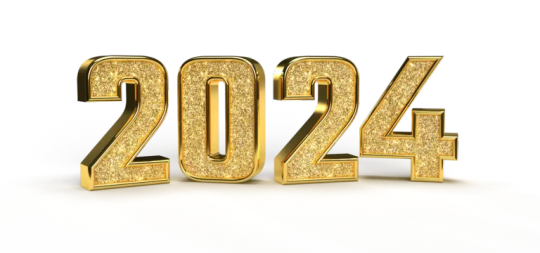
Now we reach the 2020s and this decade is still young, so it is hard to say what the future will hold for certainty, but we can look at the last four years and notice some significant waves being made recently in Shonen Jump alone. I already spoke of Undead Unluck, a series that almost wears it would now be considered retro inspirations on its sleeve. With an opening chapter that establishes an MC that seems motivated by a sexual joke, A power system follows a verbal naming gimmick, and a loose enough world that allows for characters of varying aesthetics and to be incorporated into groups. With groups of these powerful characters splitting up to face each other and use their ridiculous power to the extreme. Even in the series' own meta arc about creating manga, the in-universe analogy for Undead Unluck’s manga is commented on as feeling retro.
There is no doubt the biggest viral hit of the decade so far has gone to Kagurabachi, a manga about sword fighting and magical crime lords that seems almost indulgent in its stylistic slicing and or dicing of baddies. Its memetic success was primarily due to a somewhat sincere and somewhat ironic belief that it would be the “next big thing” as it promised to be a stylized action series. Another surprise viral success has been the manga Nue’s Exorcist which sees another supernatural swordfighter boy harness the powers of his sexy spirit lady while getting into harem shenanigans that echo a particular form of ecchi of anime’s past that had actually been somewhat absent in the past decade in jump. Both of these series have a somewhat noticeable similarities to Bleach, a long running shonen action series that has seen its own revival in the last few years of writing this with the long awaited adaptation of the final arc of the bleach anime.
While the other members of the “big 3” never truly went away and became almost inter-generational, Bleach truly did feel like a “come back” as it was absent for so long. And unlike Hunter x Hunter and Jojo which were never really popular in the west and even their older anime are more regarded as anime deep lore. Bleach was one of the most popular series in the west at the time to never receive a conclusion animated.
Speaking of anime of the 2000s Trigun Stampede was a reimagining of the original late 90s show. This errs a bit similar to Hunter x Hunter’s style of revival, but also seems uniquely its own in actually trying to find a balance between the original series but adding in things cut from its original late 90s early 2000s counterpart.
And now we must examine other shonen magazines. Series like Gachiakuta created by a former assistant of Okubo, the creator of Soul Eater, carries with it much of the similar energies of that series. Its also noticeable as being a truly dark fantasy series. Not an urban fantasy, but rather a completely new world that had a very grunge and dirty world building. And then there is Daemons of the Shadow Realm, a series by Fullmetal Alchemist creator Hiromu Arakawa. This series is also set in modern day japan with supernatural elements, however Arakawa’s style of writing is practically unchanged from her time on FMA. With an emphasis on action, intricate mysteries, and character building comedy with her trademark over exaggerated blocky style.
This to me shows that we are seeing a bit of a combination of people who are now entering the workforce inspired by creators of the past, but also that creators of the past still exist 20 years later and are still making content that hasn’t really undergone significant change.
Of course, we can’t also forget the implementation of the Manga Plus/J plus service which has opened up a very interesting ground for creators to have some of the most creatively out there series than what you may have expected from the shonen jump brand. I genuinely don’t think series like Make the Exorcist Fall in Love or Fire Punch would’ve ever been acceptable in the pages of a weekly shonen series. However one series in particular does feel like it could've and boy its been quite the success. Kaiju no 8.
Kaiju no 8 almost feels as though it is the AoT of a new generation with the amount of anticipation this one series has as well as the similarities between the series superficial elements. However, I'd say the key distinction between the two has been the tone. AoT took a dark and practically dour tone on its titan infested world. With an MC declaring war on all of his enemies. The pain was realistic, with human bodies being brittle and vulnerable. And the belief that just because you were a good person you weren't going to make it out alive. Kaiju no 8 instead opts for a more action oriented tone. Down playing the bleak realism for more "Hell yeah!" moments. With super science weapons that feel more akin to a tokusatsu show and fights and battles between humans an kanji the feel like the Dragon Ball style wrestling matches of old.
And of course, that’s not to say Jump hasn’t continued with series that feel more modern like the realistic and mellow romance of Blue Box or the dramatic coming of age story of Akane-Banashi.
But the presence of these series has caused somewhat of a friction with the popular conception of the magazine. Its safe to say that while “shonen” tends to think of action male oriented series, it can really just mean works aimed more at adolescents. But I think many tend to associate this familiar feeling of “what is shonen” with their popular introduction of the magazine. With a saturation of action and brash comedy series. This is further complicated by the fact many action series in jump are actually ending over the last decade. With new ones not popping up to replace them as frequently and series like One Piece and MHA and Black Clover basically stretching out across an entire decade or longer.
In fact, I don’t think it's unreasonable to believe that the hype for something like Kagurabachi was in part a belief that it signaled a return of a type of familiar series and genre that had been missing. Or at the very least, looked to fill an inevitable gap the magazine was obviously going to be facing. Followed by the other commercial success of Nue’s Exorcist, we are likely to see these series last for a long time. At the time of this writing, Tokyo Revenger’s author Ken Wakui has released Astro Royale, a series that feels very similar to his previous work yet infused with this almost GetBackers flavor.
So that leaves us with the question at the start, are we seeing a rise in 2000s nostalgia in anime and manga?
Conclusion
So I'm sorry if I disappoint, but the best I can say is, I’m not certain. I do believe that from my observation I think it is reasonable to say that we are seeing a rise in creators in the shonen space being ones inspired by series from 20 years ago. However, I think we are also seeing creators who are from that time period also returning to write how they have always written.
On the consumer side, I think we can see that fans of anime and manga have changed in the sense their tastes can now be shaped by a much larger catalog of series at their disposal. But in the case of shonen, I think we are simply seeing those who likely got their start in anime at around the 2000s resonating with newer series drawing upon those series, but also with younger fans now likely to grow up with the tail end of what was popular in the 2010s now being influenced by the 2020s.
I also believe that one of the defining features of the anime community in the last decade is hype culture. And currently we are seeing a rise in series that actually feel more catered to hype, be it a revival of a series they liked or predicting what will be the next success.
All and all, this piece was trying to tunnel on the shonen demographic in general, which is more likely than not going to have similar traits relative to itself. I do see us as a community endorsing trends of the past and there’s an excitement for these things to “come back” even if they may or may not have left.
If you liked this please drop a like or reblog because I may do more of these think pieces in the future.
#anime#manga#think piece#discussion#shonen#shonen jump#kagurabachi#gachiakuta#nue's exorcist#undead unluck#kaiju no. 8#bleach#one piece#naruto#yomi no tsugai#attack on titan
26 notes
·
View notes
Text
the Federation itself as a concept is so funny because the founding members are
the Vulcans, who have been friends with humanity for years but don't seem to actually like them all that much, instead regarding them with a sort of perverse fascination usually reserved for virology labs
the Andorians, who were fighting the Vulcans for like a hundred years
the Tellarites, who don't like any of these people and whose cultural trait is arguing, and
humans, whom nobody knew existed until last century when they shot themselves into space on a heavily modified nuke, invented world peace and won a fight with the nearest imperial superpower
like imagine you're the Romulan Empire and these weird monkeys who've barely figured out interstellar travel show up on your doorstep in the equivalent of a shipping container with missiles strapped to it, kick your ass in front of everybody, and then start a friendship club with 3 of your neighbours who all hated each others' guts until like a year ago. now I understand why every Romulan on the show is so angry
23K notes
·
View notes
Text
So this is heavy but recently shared, Akira Toriyama, legendary mangaka and creator of Dragon Ball has passed away today at age 68.

I know I am one of many when I say Akira Toriyama’s works were inspirational. The man’s incredibly legacy and influence on the tropes and style of manga we take for granted these days is practically unfathomable. From creators of all walks of life, professions and backgrounds.
He is an indisputable legend of the medium and inspirer of many. Thank you, Toriyama. Thank you and goodbye. May you rest in peace


520 notes
·
View notes
Text
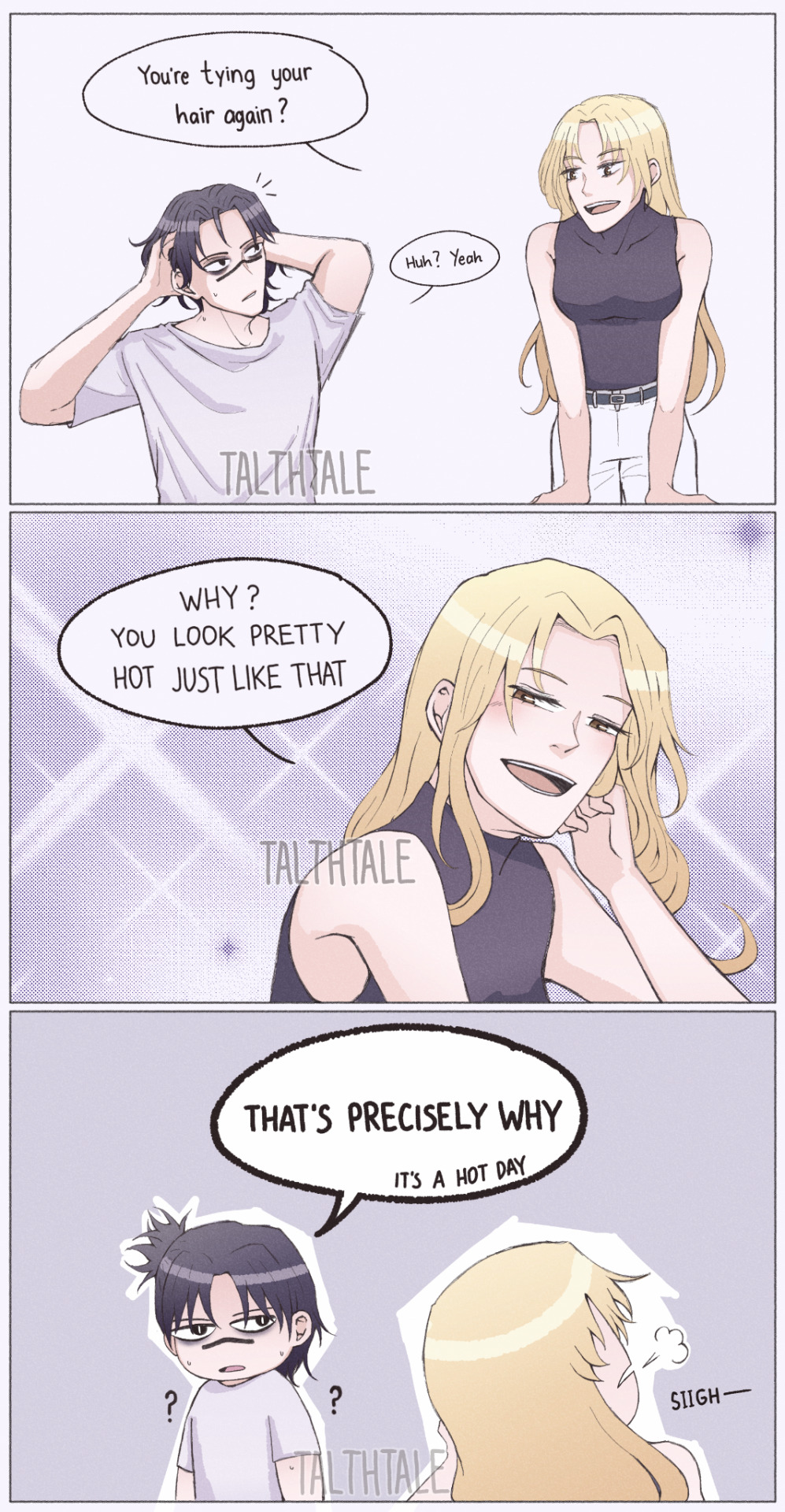
Later that day:

My guy finally learned a lesson:

3K notes
·
View notes
Text
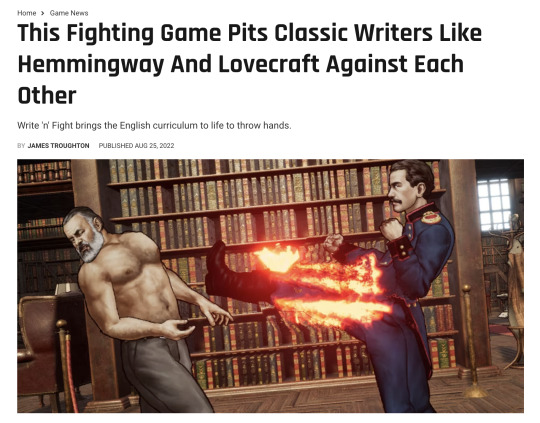
furious that i am not a playable character in this game
71K notes
·
View notes
Text
We got his name? Holy cow! The main character of Gachiakuta is Rudo Surebrec!

38 notes
·
View notes
Text
“I want to play a MegaTen game with an emphasis on characters and mood like Persona, but also star more mature characters and subjects like SMT. And it can’t be as simple as Soul Hackers.”
Have you heard of a game called Digital Devil Saga?

Not putting down people who like either: DDS just has like the best mix of Persona/SMT imo. It’s got the dark existentialist world of an SMT game but the style and character arcs of a Persona game.
Heck, everyone has a unique demon with the Atma Avatar system similar to Personas


It’s biggest failing in my opinion is that it really is one big story/game split between two parts and you really need to play both to get closure.
11 notes
·
View notes
Text
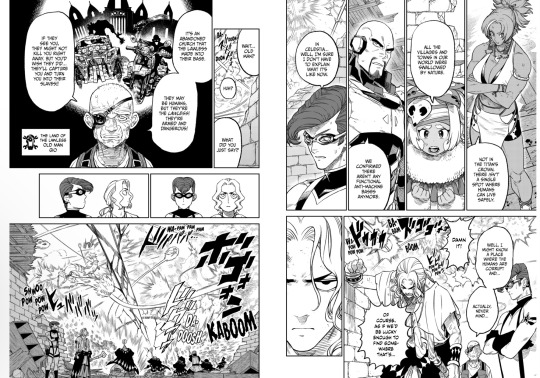
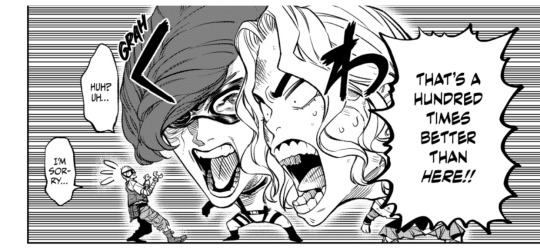
About time someone finally brought up the obvious in Versus
2 notes
·
View notes
Text
Ryoji: Hello, all my fellow students
Minato: Okay, you’re Pharos. You literally have my face.
Yukari: He is kinda cute.
Minato: He is literally me with my hair combed back! He has my voice too!
Junpei: Man I feel like I already know Ryoji.
Minato: Gaaah!
39 notes
·
View notes
Text
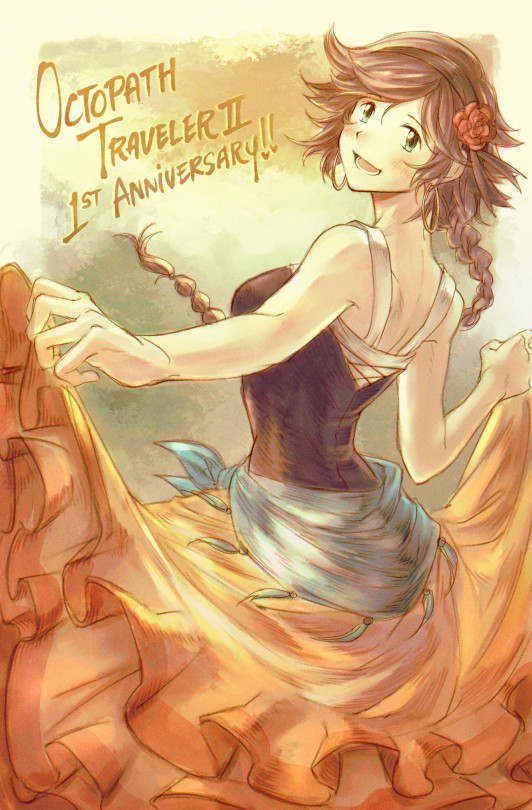
Happy 1st Anniversary Octopath Traveler 2!🐙💃🌟
Thank you for such an absolutely amazing game 🥹💖✨
364 notes
·
View notes
Text
Takaya: I shall deliver onto you SALVATION!
Shinji: Oh no! Amada! He has a gun! A real gun!
Ken: Oh no, that makes him literally the most dangerous person in the persona franchise!
26 notes
·
View notes
Text
Manga Recommendation: Tower Dungeon
So looks like Arkus Rhapsode is here to recommend another fantasy manga after the last one. So this time we're going for a bit of a different flavor with the series Tower Dungeon by by Tsutomu Nihei who you may know as the creator of Blame! and Knights of Sidonia.
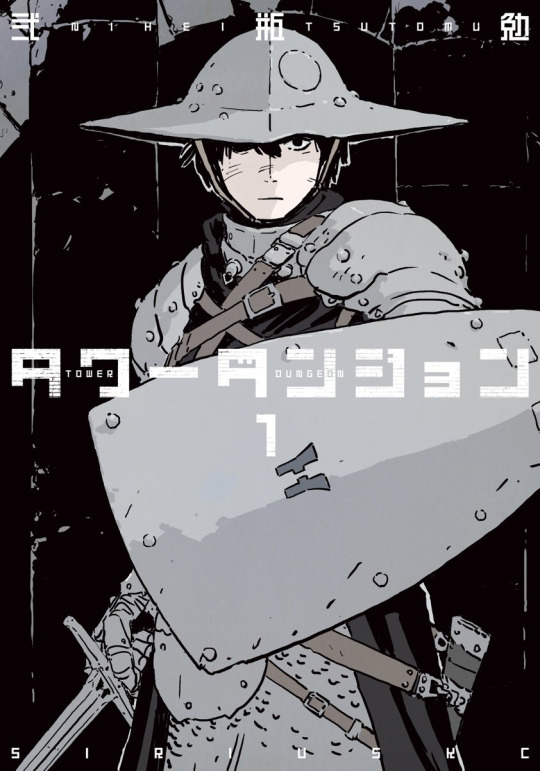
Now I've known about this series for a bit even though it is relatively new. Having only started last year in Monthly Shonen Sirius. But I remember its announcement from people like Manga Mogul and hearing Makoto Yukimura (Author of the incredible Vinland Saga) recommending it. Now I always loved Sword and sorcery so I was gonna read it eventually, but it just wasn't translated. However, now being able to read the available chapters, I can say this is a very different type of fantasy series.
The premise is very basic: An evil sorcerer has killed a nation's king and kidnapped a Princess and now the royal knights need to ascend the "Dragon Tower" to save her. One battalion has conscripted a young man named Yuva for assisting troops medically has found he has impressive strength. Now Yuva must strengthen himself for the journey ahead as they explore the deadly tower.
Now like all simple premise stories, the real strength is in execution. And unlike the other fantasy series I've talked about before which have bucked the trend of "RPG fantasy" be leaning more into a traditionalist fantasy stories a la Tolkien, this goes for the more realist fantasy of something like Berserk or Dark Souls.
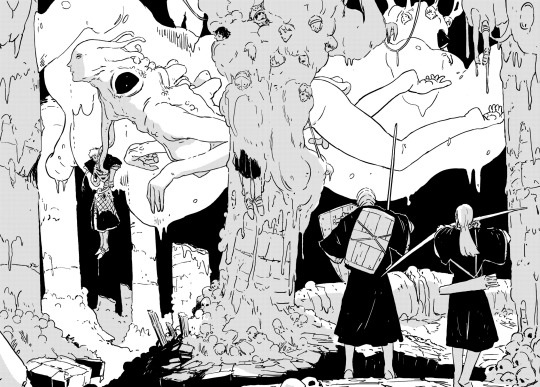
The world of Tower Dungeon may have things like magic and dragons, but it is a dingy, dirty, and lacks any frills. Knights wear heavy armor and people are covered in blood and scars from their adventures.


The mighty Dragon Tower itself? The most iconic thing about this series and the basis of the adventure? Looks like this. This isn't an opulent tower, this is a massive imposing structure where monsters dwell.
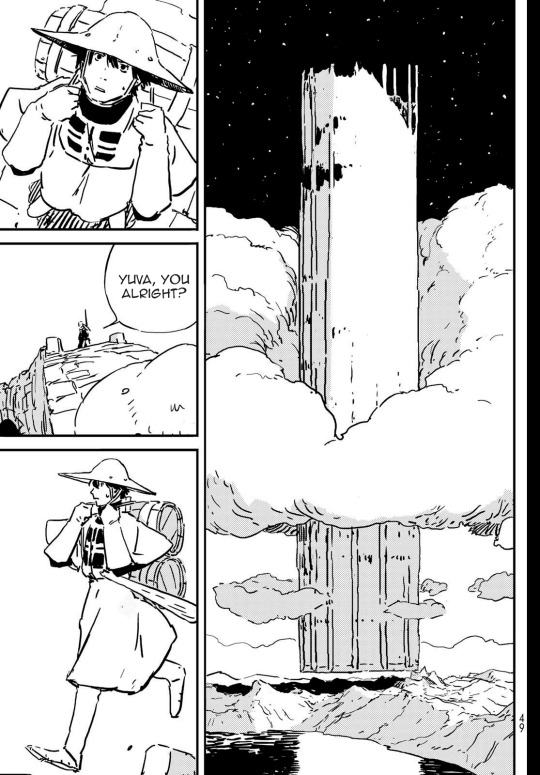
However, unlike some grim dark or edgy fantasies, this world isn't indulgent in its darkness. The violence and death are never cool or cheap. They are simply the way the world is. Even when magic exists, the world is still like Medieval Europe and all the "joys" that come from it.
The people as well are similar. These aren't romanticized or polished fantasy archetypes that often come with the idea of a Dungeons and Dragons style adventure, these feel like average joes plucked off the streets having to do a job. If you are say a fan of something like Chainsaw Man, this sort of post modern emphasis on people acting like regular weirdos and not some "anime characters." And I think that is something quite nice that even in a fantastical world, we can see our regular selves in them.
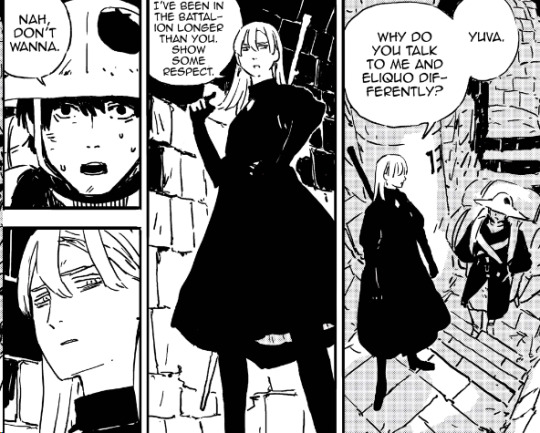



But that's just the story, what about the art? Well if you've noticed this series does have a very minimalist style. Something similar to that of Land of the Lustrous or Chainsaw Man. These almost scratchy and not the most detailed designs that make use of their simplicity to create this very unique atmosphere.




Creature designs themselves are less fantastical and more grody. Feeling as if they come from an off shoot of man rather than some majestic beast. Right down to the cat people.


This series is still new and sadly hasn't been officially translated yet. I've had to use mangadex to read this, so my heart goes out to the translator team. I can understand that this may be a niche that's not for everyone, but its something that feels like such a good sign for fantasy as a genre. A genre that I think has somewhat been stagnated in popular belief with the greater emphasis on Urban Action manga and the reliance on escapist fantasy anime like isekai. To see a more dirty but down to earth take on the premise, I highly recommend it.
#manga#manga recommendation#recommendation#tower dungeon#tsutomu nihei#nihei tsutomu#blame!#shonen sirius#chainsaw man#dark souls#knights of sidonia
31 notes
·
View notes
Text
I remember when the only thing I had to worry about with an anime adaptation was hoping for a studio with a good, proven track record was doing the adaptation. But now its also worrying about that AND hoping that they don't end up a Disney+ or X streaming exclusive.
49 notes
·
View notes
Text
Y'know I get people are being pretty doom and gloom right now for 2024 consoles. What with the Nintendo Switch 2 potentially being pushed back, Playstation has no plans to release a big established first party game in 2024, and Xbox moving games to other consoles.
But I wanna look at the positives. 2024 can be the year of me finally getting through my backlog of games. Sure its a bummer that there might not be a new Metroid, Fire Emblem, God of War, Ghosts of Tsushima, Rachet and Clank, etc. but hey now I have time to actually finish things that have been sitting on my shelf for literal years.
I have Shadows of War definitive edition and still haven't played it despite loving Shadows of Mordor. Oh yeah Metroid Prime Remaster? Haven't finished that either. I have some games I even want to replay like Second Sight on my OG Xbox.
2 notes
·
View notes

